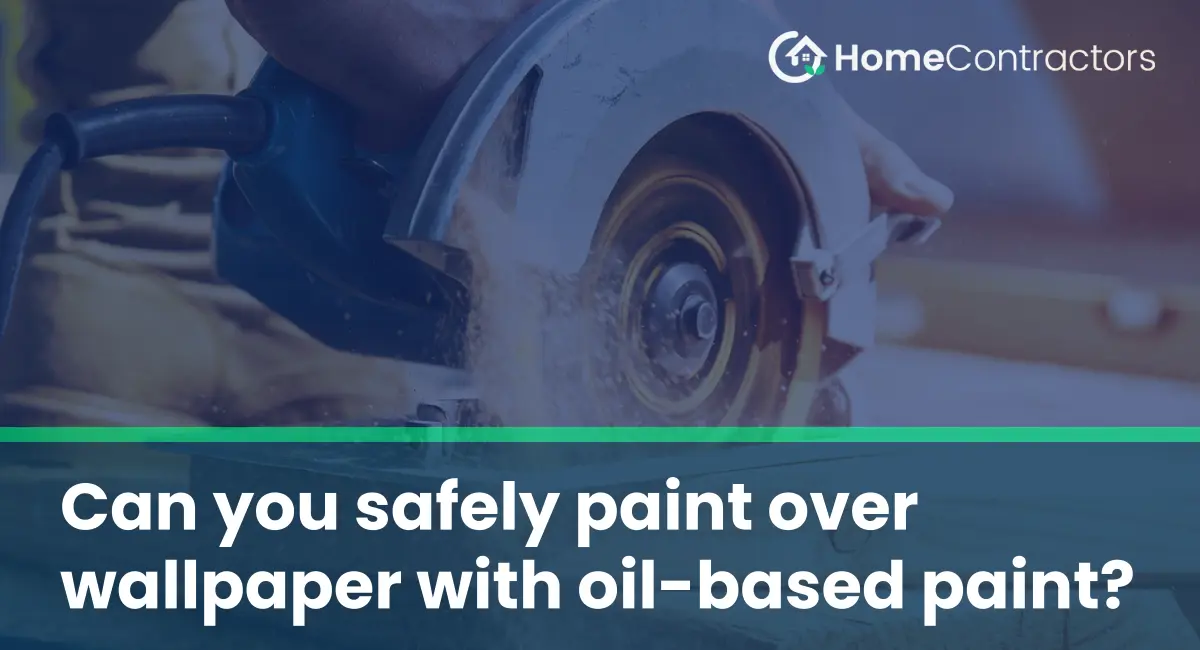Painting can be a great way to refresh the look of a room or add a personal touch to your home decor. However, when it comes to painting over wallpaper, some additional considerations need to be taken into account. One common question that arises is whether it is safe to paint over wallpaper with oil-based paint. In this article, we will explore the topic in detail and discuss the pros and cons of using oil-based paint over wallpaper.
Understanding Oil-Based Paint
Oil-based paint is a type of paint that is formulated with oils as its main base. These paints offer several advantages over their water-based counterparts, including excellent adhesion, durability, and a professional finish. However, they also come with some drawbacks, such as longer drying times, strong odors, and the need for solvents for cleanup.
Considerations Before Painting
Before deciding to paint over wallpaper with any type of paint, including oil-based, certain considerations need to be taken into account:
- Condition of the wallpaper: It is essential to assess the condition of the wallpaper before proceeding with any painting project. If the wallpaper is peeling, bubbling, or damaged, it is best to remove it entirely instead of painting over it. Painting over damaged wallpaper can further exacerbate the issues and result in an unsightly finish.
- Type of wallpaper: Not all wallpapers are created equal, and different types may respond differently to various painting methods. Vinyl-coated, washable, or laminated wallpapers may have a smoother and more waterproof surface, making them more suitable for painting. On the other hand, textured, fabric-based, or fragile wallpapers may not provide a stable foundation for paint and may require more extensive preparation or removal.
Preparation Steps
To ensure a successful paint job over wallpaper with oil-based paint, proper preparation is crucial. Here are the necessary steps to follow:
- Clean the wallpaper: Start by thoroughly cleaning the wallpaper using a mild detergent and warm water solution. This will help remove any dirt, grease, or stains that could affect paint adhesion.
- Patch any damages: Inspect the wallpaper for any holes, tears, or loose edges. If you come across any, use spackling paste or joint compound to fill in the damaged areas. Allow sufficient drying time and sand the patched areas until smooth.
- Prime the wallpaper: Applying a primer is highly recommended, especially when dealing with wallpaper. A primer will create a suitable surface for paint adhesion and ensure a more uniform finish. Look for a primer specifically designed for use on wallpaper or one that contains stain-blocking properties.
- Test the paint: Before proceeding with painting the entire room, it is advisable to do a small test patch. Apply a coat of oil-based paint on a inconspicuous area of the wallpaper and let it dry completely. This will help determine if the paint adheres well and if any issues, such as wrinkling or bubbling, arise.
Painting Over Wallpaper with Oil-Based Paint
Once you have completed the preparation steps, you are ready to begin painting. Here are some tips to keep in mind:
- Use a brush or roller: When applying oil-based paint over wallpaper, it is recommended to use a high-quality brush or roller. These tools will ensure an even application and help achieve a professional finish.
- Apply thin coats: Rather than applying a thick layer of paint, it is advisable to apply multiple thin coats. This will reduce the chance of the paint causing the wallpaper to peel or bubble.
- Allow ample drying time: Oil-based paints have longer drying times compared to water-based paints. It is crucial to allow each coat to dry thoroughly according to the manufacturer’s instructions before applying additional layers or moving furniture back into the room.
Painting over wallpaper with oil-based paint can be a viable option under certain circumstances. By thoroughly evaluating the condition and type of wallpaper, and properly preparing the surface, you can achieve a successful and durable paint job. However, it’s important to note that removing the wallpaper entirely may be the best approach in some cases, particularly if the wallpaper is damaged or unsuitable for painting. As always, it is recommended to follow the manufacturer’s instructions and seek professional advice if needed, to ensure the best possible outcome for your painting project.
